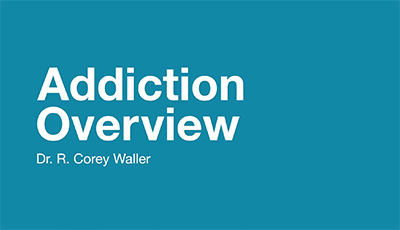Clinical Provider Quick Tips
Addressing Substance Use in Primary Care Settings
What You Need to Know
Stimulant Use Quick Tips
Stimulant use trends, signs and symptoms of use, patient engagement and motivation, and intervention approaches within primary care settings.

Clinical Recognition of Stimulant Use Disorder (StUD)... Including Methamphetamine
Description: This brief video provides information on the stigma, underlying conditions, and related health concerns to consider when treating patients with SUDs, and discusses ways to use this knowledge to provide better care.
Presenter: Frances Southwick, DO
Watch Video: Earn CME (.25 credit); Non-Credit Version (15:36 min.)
- STIGMA. Appreciate that stimulant use is stigmatized; therefore, folks do not usually self-disclose.
- SELF-MEDICATION. Know the predictable primary conditions for which people who use stimulants are self-medicating.
- SECONDARY CONDITIONS. Recognize the predictable secondary health conditions.
- YOU HAVE THE POWER. Own the power of primary care! Your usual chart review plus nonjudgmental clinical interview allows for rapid clinical recognition of stimulant use. Recognition leads to treatment.

Getting to the Good Part, How to Take an Engaging Substance Use History
Description: This brief video highlights the use of effective communication techniques to engage and motivate primary care patients when taking a substance use history.
Presenter: La Donna Porter, M.D.
Watch Video: Earn CME (.25 credit); Non-Credit Version (18:29 min.)
- Taking a substance use history can be informative, effective, and engaging.
- Eye contact is important when asking substance use questions.
- Open-ended questions are a great motivational interviewing tool for obtaining a substance use history.

Motivational Interviewing Strategies to Help Increase Engagement in Care
Description: This brief video reviews motivational interviewing strategies and their applications for stimulant use in primary care. Methods like open-ended questioning, non-judgmental listening, and understanding can help increase patient engagement and openness to change.
Presenter: Joy Chudzynski, Psy.D.
Watch Video: Earn CME (.25 credit); Non-Credit Version (14:42 min.)
- Use curiosity the engage the patient. What is important to them?
- Remain non-judgmental and ask open-ended questions.
- Understand what the patient wants to change. Link that to their substance use to increase motivation for change.
- Avoid telling patients what to do.
BONUS MATERIAL
Addiction Overview
Description: This video provides a brief overview of substance (particularly opioid) use disorders, including basic neurochemistry. The goal of this course is to increase the knowledge base of health care providers treating patients with opioid use disorders.
Presenter: R. Corey Waller, MD, MS, FACEP, DFASAM
Watch Video: Earn CME (.5 credit); Non-Credit Version (23:29 min.)
*Note: All videos are 508 compliant and include closed captioning.
This series is sponsored by the Department of Healthcare Services in California through the SAMSHA State Opioid Response Grants. All information in the presentations are generated by the presenters and do not reflect the opinions of CA DHCS.

